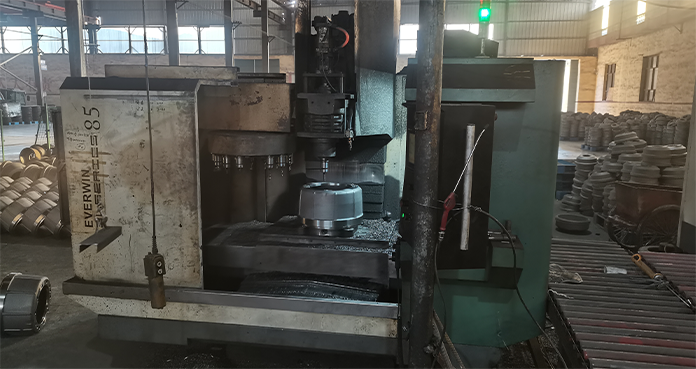12 月 . 04, 2024 10:15 Back to list
parts of brake drum
Understanding the Parts of a Brake Drum System
Braking systems are essential components of vehicles, responsible for ensuring safe travel by controlling speed and stopping motion. One prevalent braking system used in many vehicles is the drum brake, which utilizes a brake drum as a central component. To understand the function of the brake drum system, it is critical to explore its various parts and how they work together to facilitate effective braking.
The Brake Drum
The brake drum itself is a cylindrical component typically made of cast iron or aluminum. It rotates with the wheel and is situated at the rear of the vehicle. When the brake pedal is pressed, the brake shoes push outward against the inner surface of the drum, creating friction that slows down the wheel. The effectiveness of this system largely depends on the design and material of the brake drum.
Brake Shoes
Brake shoes are another vital component of the drum brake system. They are curved metal plates that house friction material on their outer surfaces. When the brakes are engaged, hydraulic force pushes the brake shoes outward against the brake drum. The friction material on the brake shoes enhances the grip against the drum, allowing for effective braking. Over time, the friction material wears down, necessitating replacement to maintain optimal braking performance.
Wheel Cylinder
The wheel cylinder is a crucial part of the drum brake assembly. It is a hydraulic component that houses pistons and is directly connected to the brake lines. When the driver presses the brake pedal, brake fluid flows through the brake lines into the wheel cylinder. This hydraulic pressure forces the pistons outwards, pushing the brake shoes against the brake drum. The efficiency of the wheel cylinder significantly influences the overall performance of the braking system.
Return Springs
To maintain the overall functionality of the brake drum system, return springs are used. These springs play a pivotal role in retracting the brake shoes when the brake pedal is released. They ensure that the brake shoes return to their original position, preventing unnecessary friction against the drum when the brakes are not engaged. Proper functioning of the return springs is critical for the longevity of both the brake shoes and the drum.
parts of brake drum

Adjusting Mechanism
Most drum brake systems also feature an adjusting mechanism, often referred to as an automatic adjuster. This component is designed to regulate the distance between the brake shoes and the brake drum as the friction material wears down. By automatically adjusting the position of the brake shoes, this mechanism helps maintain consistent braking performance. Over time, if adjustments are not made, the effectiveness of the braking system can diminish.
Dust Shields
Dust shields are protective components located behind the brake drum. Their purpose is to prevent dirt, debris, and brake dust from entering the drum assembly and interfering with the braking components. Keeping these elements free of contaminants is vital for ensuring smooth operation and prolonging the lifespan of the brake components.
Maintenance and Safety
Understanding the parts of a brake drum system is essential for car owners and enthusiasts. Regular inspection and maintenance of these components are necessary to ensure safety and optimal performance. Worn-out brake shoes, damaged drums, or malfunctioning wheel cylinders can lead to reduced braking efficiency, potentially resulting in dangerous driving conditions.
Routine maintenance tasks could include checking the brake fluid levels, inspecting the brake shoes for wear, and ensuring the return springs are functioning correctly. It is also advisable to have a professional mechanic evaluate the integrity of the drum and the associated components, especially before long drives or during seasonal changes that might affect driving conditions.
Conclusion
The brake drum system is composed of several interrelated parts, each playing a distinct role in ensuring effective braking. From the robust brake drum to the hydraulic wheel cylinder and essential return springs, understanding these components provides insight into vehicle safety and performance. Regular maintenance and attention to these brake parts are paramount for keeping a vehicle roadworthy and secure, ensuring that drivers can rely on their braking systems under any circumstances.
-
Brake Drum for Kamaz Trucks Durable OEM Replacement & High Performance
NewsMay.30,2025
-
Brake Drum Man High-Quality Drum Brake & Shoe Solutions
NewsMay.30,2025
-
High-Performance Brake Drum for Kamaz Trucks Durable Drum Brake Components
NewsMay.29,2025
-
Brake Drum Man High-Quality Drum Brake Drums & Brake Shoes
NewsMay.29,2025
-
Brake Drum MAZ High-Performance & Durable Replacement Parts
NewsMay.29,2025
-
heavy truck brake drums
NewsMar.07,2025
